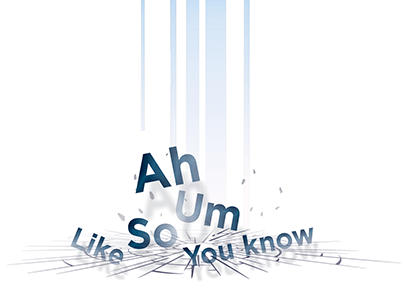
Listen to author Bill Brown, DTM, as he dives deeper into this commonly used filler word.
When I first joined Toastmasters the only words the Ah-Counters looked for were ums and ahs. As the years went on, the list of words, phrases, and pregnant pauses got longer and longer and longer. But, in my experience, there is one word that has taken on a reputation worse than um, and that word is so.
Many speakers use that word as a filler on a regular basis. But there is one big difference between so and um—so also has real meaning. It is a real word.
The Ah-Counter position can be a daunting job. You are listening intently to presentations, marking down every instance of a long list of forbidden words. The tendency is to put a mark every time you hear one. But what if the speaker uses the word correctly? It frequently is still marked as bad.
At a recent club meeting, a newer member was dinged for using so. It really bothered her because she thought she had used it correctly. In fact, she had.
I suggest that if we are going to ding members for this word, then we need to analyze whether or not they used it correctly and only count the wrong ones. That is only fair to the speaker. But that requires we understand the legitimate uses of the word—and be able to recognize them.
If you look up so in a dictionary, you will find many uses. It can be used adverbially: “That piece of cake was so big.” It can be used to indicate purpose: “I wanted to win the speech contest, so I practiced one hour each day.” It can be used to indicate reason: “The power went out, so we checked the circuit breaker.” Result is another usage: “I didn’t study for the test, so I failed it.” It can mean “likewise”: “You like ice cream? So do I.”
The dictionary also indicates that it can be used to introduce a question. “So why would you do that?” It can also be used to introduce a conclusion. “So that is how you write a good speech.”
There is one big difference between so and um—so also has real meaning. It is a real word.
I would add another usage that is not in the dictionary. Cadence or rhythm is very important in speaking. Sometimes you need an extra word in a sentence or it just doesn’t feel right. I believe it is okay to use so in this instance. Just don’t overdo it.
Let me illustrate my point. Imagine I am leading a webinar on storytelling. I might say, “Today we are going to look at some of the best resources on effective storytelling. Here is a list of the books that I recommend.” To say this effectively, I need to pause before “here,” which sounds a bit formal. I could also say, “Today we are going to look at some of the best resources on effective storytelling, so here is a list of the books that I recommend.” The pause is much shorter, and the emphasis is softer, giving this a more casual feel.
There are, however, two usages that are not listed in any dictionary. The first is as a substitute for um. Ding! The second is to introduce your first sentence. Ding! Far too many speakers start their speech with so. I see that as the weakest way to open your message. Also, if you start virtually every sentence with so, that is bad as well. Ding!
The real issue here is not “Did the speakers use so?” The issue is “Did they use it correctly?” Perhaps that is more a job for the grammarian than the Ah-Counter.
There is one more aspect of so that comes into play. It is possible to use that word correctly, but so frequently that it becomes annoying. In that case, I recommend that you find different ways to say the same thought. Again, perhaps the grammarian should look for that.
So is a versatile word. Although short, it performs many different roles. Used properly, it greatly enhances your speech. Used as a crutch word, it reduces your impact. If we are going to count the so’s, let us also distinguish between correct and incorrect usages. It is easy to do once you develop an ear for it.
Bill Brown, DTM is a speech delivery coach in Gillette, Wyoming. He is a member of Energy Capital Toastmasters in Gillette. Learn more at billbrownspeechcoach.com.



 Previous
Previous
 Previous Article
Previous Article

